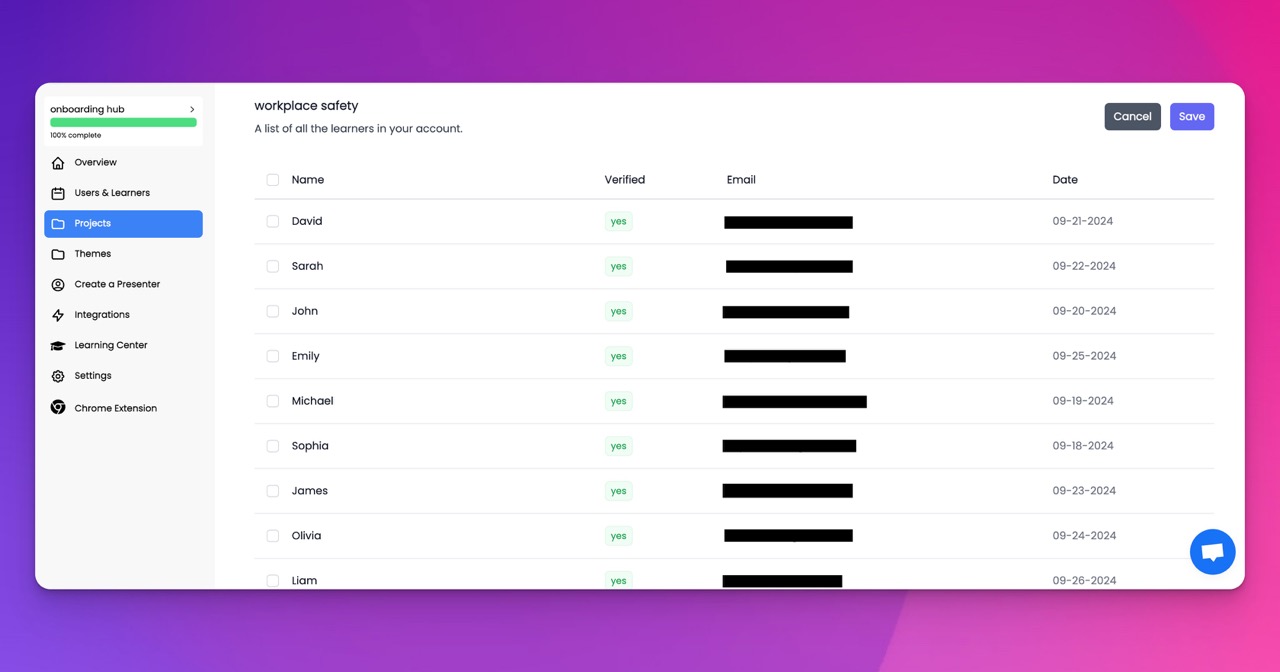🎉 Trainday now integrates with Zendesk and Hubspot 🎉 Trainday now integrates with Zendesk and Hubspot 🎉 Trainday now integrates with Zendesk and Hubspot
🎉 Trainday now integrates with Zendesk and Hubspot
🎉 Trainday now integrates with Zendesk and Hubspot
Contact
Building Safety: How Data-Driven Training Targets Site-Specific Hazards in Construction
In the construction industry, where every project brings its unique set of risks and challenges, ensuring worker safety is paramount. "Building Safety" explores how data-driven training programs are revolutionizing safety protocols by targeting site-specific hazards. This targeted approach not only enhances worker preparedness but also significantly reduces the incidence of accidents and injuries on construction sites. By leveraging data to identify and address specific hazards associated with particular sites or tasks, construction companies can create a safer working environment tailored to the real-world conditions their workers face daily. This blog post delves into the importance of data-driven training in construction, outlining how it can be effectively implemented to safeguard workers.
Tailoring Training to Specific Site Conditions
Utilizing data to analyze site-specific conditions allows for the customization of training programs that address the precise risks workers will encounter.
Hazard Assessment Through Data Analysis
Advanced data analytics can assess past incident reports, weather conditions, and site-specific work patterns to identify potential hazards. By understanding these risks, training can be specifically designed to address the most probable and severe safety challenges at a particular construction site.
Real-Time Risk Adjustments
As conditions change, data-driven systems can update training requirements in real time. This flexibility ensures that training remains relevant and can address new hazards as they arise, such as sudden environmental changes or the introduction of new equipment and materials.
Enhancing Engagement with Interactive Training
Interactive, data-driven training modules increase engagement by immersing workers in scenarios that closely mimic actual site conditions. This hands-on approach leads to better retention of safety practices and protocols.
Simulation-Based Learning
Using virtual reality (VR) or augmented reality (AR), training programs can simulate specific construction environments and hazards, providing workers with a safe space to learn and practice their responses to various situations. These simulations are based on real data collected from construction sites, enhancing their relevance and effectiveness.
Gamification of Safety Training
Incorporating elements of gamification, such as scoring systems or competitive scenarios, can make safety training more engaging and interactive. This method motivates workers to participate actively and fully in training exercises, leading to a deeper understanding and better application of safety protocols.
Fostering a Culture of Continuous Learning
Data-driven training facilitates an environment of continuous learning and improvement, essential for adapting to the evolving nature of construction sites.
Ongoing Training Updates
With data continually collected from various sources, training programs can be regularly updated to reflect the latest safety standards and best practices. This ongoing process ensures that all training materials are current and effective, keeping safety knowledge fresh and top of mind.
Predictive Analytics for Proactive Safety Measures
Predictive analytics can foresee potential future hazards based on trends and patterns identified in the data. This proactive approach allows companies to prepare and train workers for likely issues before they become problematic, potentially preventing accidents and injuries.
Conclusion
"Building Safety: How Data-Driven Training Targets Site-Specific Hazards in Construction" underscores the critical role of tailored, data-driven safety training in the construction industry. By focusing on the specific hazards of each site, construction companies can significantly enhance the effectiveness of their safety programs, resulting in fewer accidents and a safer workplace. As technology continues to advance, the potential for data to improve training and safety practices grows, promising a future where construction sites are not only productive but also exceptionally safe environments for all workers.
Accelerate Compliance.
Deliver OSHA-Ready Courses Instantly.
Empower your team with data-driven training solutions tailored to your industry's safety standards. Stay compliant, reduce risks, and boost productivity with AI-powered course creation.
